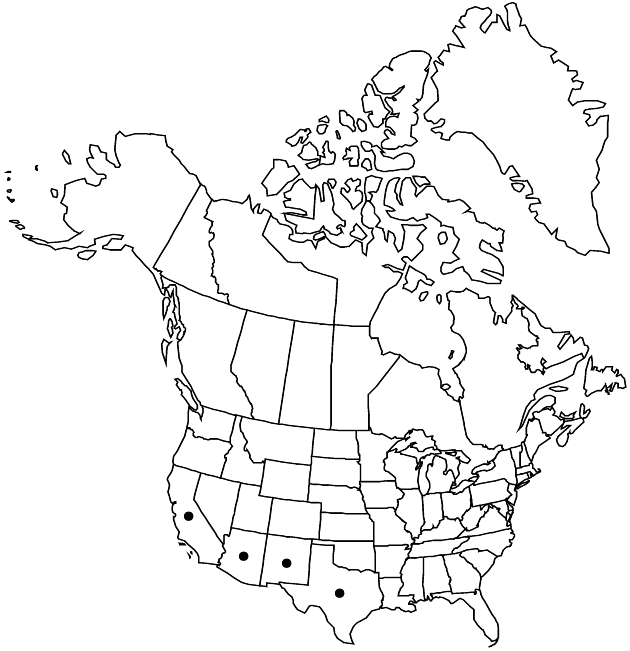Difference between revisions of "Hymenothrix wrightii"
Smithsonian Contr. Knowl. 5(6): 97. 1853.
FNA>Volume Importer |
FNA>Volume Importer |
||
| Line 46: | Line 46: | ||
|publication year=1853 | |publication year=1853 | ||
|special status= | |special status= | ||
| − | |source xml=https://jpend@bitbucket.org/aafc-mbb/fna-data-curation.git/src/ | + | |source xml=https://jpend@bitbucket.org/aafc-mbb/fna-data-curation.git/src/8f726806613d60c220dc4493de13607dd3150896/coarse_grained_fna_xml/V19-20-21/V21_975.xml |
|tribe=Asteraceae tribe Heliantheae | |tribe=Asteraceae tribe Heliantheae | ||
|subtribe=Asteraceae (tribe Heliantheae) subtribe Chaenactidinae | |subtribe=Asteraceae (tribe Heliantheae) subtribe Chaenactidinae | ||
Revision as of 15:38, 18 September 2019
Annuals or perennials, 3–6 dm. Phyllaries (8–)12–16, mostly oblong to ovate or obovate. Rays 0. Disc florets 15–30; corollas white or pinkish to purplish, 5–6 mm, lobe lengths 2–3+ times throats; anthers pinkish to purplish. Cypselae 4–5 mm; pappus scales 4–6 mm. 2n = 24.
Phenology: Flowering mostly late summer–fall.
Habitat: Rocky places, often with pinyons and junipers
Elevation: 900–2300 m
Distribution

Ariz., Calif., N.Mex., Tex., Mexico (Baja California, Chihuahua, Sonora).
Discussion
Selected References
None.
Lower Taxa
None.
